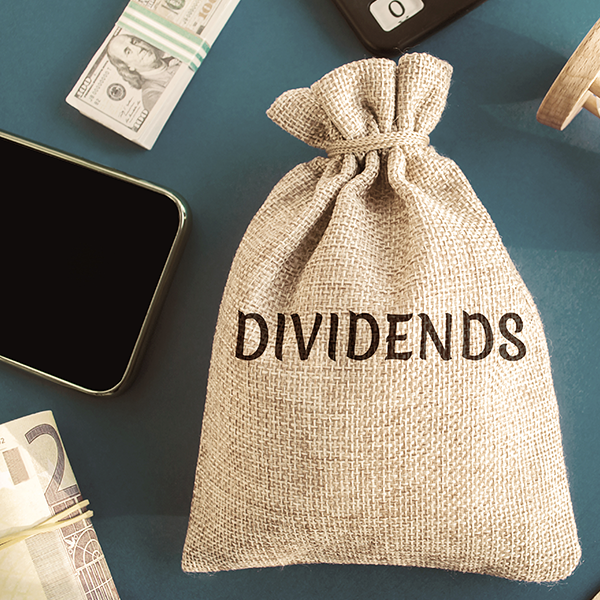Got burned in the market and want something safer? Transitioning out of being a degenerate that YOLOs your net worth into speculative assets? If so, you might be wondering what’s a good way to de-risk your portfolio. One of the touted ways is to purchase dividend stocks for a steady income stream. In this post, I’ll run through if you should buy dividend stocks and what the risks are associated with them.
Risks Of Dividend Stocks
Dividends are just money paid out of investors. This is great for investors, but not great for the company if they’d like growth. Every dollar paid out to investor is another dollar they can’t invest into R&D and make the company more valuable over time. Hence, dividend stocks are correlated with low-growth stocks.
The main risk here is opportunity cost due to lack of growth. Consider SPY: it has a historical annual return of around 10%. For dividends to give you a breakeven return, a company has to pay you 10% each year instead of reinvesting it for a better long-term return. A 10% dividend is an enormous liability for any company to have and you can argue it’s quite risky for the company and a waste of money.
- Other than keeping investors happy, paying out dividends doesn’t fundamentally help the company at all.
- 10% is, like I said, quite enormous and unsustainable for dividends. If you want “safer” dividend stocks, you’re looking at stocks that return less than 4%. Hence, the opportunity cost risk.
The other risk here is dividend stocks aren’t always safe. While boring, dividend stocks are correlated with being safer (i.e. less volatility), it doesn’t mean all dividend stocks are safe. Examples:
- $PCG used to pay out 4% dividends. Until people realize their powerlines were torching California each year.
- $GEO used to pay an average annual dividend of 10.18%. Now, they don’t due to politics and COVID causing lower incarceration rates.
- $OXY used to pay up to 12% dividends in the Great Opportunity of March 2020. Then Carl Icahn took over and sliced dividends to 0.
- And so on.
Who Should Buy Dividend Stocks?
Dividend stocks could be safer because those companies may have given up on growth. Less growth = less volatility risk and might signal a more mature, streamlined operation.
You won’t make as much money with dividend stocks, but you might have lower risk when compared to buying stocks for appreciation.
Dividend stocks will never beat appreciating stocks over the long-term since they’re handicapped by dividends. In the short term, dividends stocks are generally less volatile (i.e. safer) than growth stocks.
Due to the performance of growth vs. dividend stocks relative to their timespan (i.e. growth stocks = better longer term returns, dividend stocks = lower, more stable returns), growth stocks are better for younger people and dividend stocks are better for older people.
For example, once you’ve reached a certain point in your net worth, there’s no need to play the growth game anymore and take unnecessary risks. At that point, investors should start transitioning their investments to safer, more consistent investments.
OK, But Which Ones Should I Buy?
Each stock is volatile as illustrated above. Dividend stocks are no exception.
Just like how you probably will lose if you picked stocks for appreciation, you will also lose if you picked stocks for dividends.
The only difference is by the time you want to invest in dividend stocks (i.e. working towards retirement cash flow) is when you want to take on the least risk possible.
- Hence, picking individual dividend stocks are particularly dangerous: you won’t just lose “play money” – you’ll lose a large portion of your nest egg that was supposed to produce consistent cash flow.
- Instead of risking your nest egg with an individual dividend stock, I highly recommend diversifying with funds. Examples:
- SCHD yields around 2.89% as of this writing.
- VYM yields around 2.79%.
- VNQ: 2.34%
- DGRO: 2.04%
- VPU: 3.02%
Funds might have very sad-looking returns (and they do). But its volatility is a lot less, so you won’t have a year where you’re getting 10% dividend returns and another year where you’re getting 0%. In other words, if you’re waiting on dividends as your spending money, you should invest in a fund. Otherwise, you’re risking your livelihood on a company’s whim to pay out dividends or not.
That never ends well.
Should I Buy Dividend Stocks?
As you can see, none of the above funds are going to exceed 4%. Thus, if you’re going to build an income stream with dividends, just keep in mind that you’ll either:
- Need to take on a lot of risk with your retirement money (via individual dividend stocks), or
- Get a safe, but kind of dreadful (4%) return.
#2 might work for you if you can live off the 4% quite easily. I don’t recommend #1. If you’re still asking the question of “how do I get more alpha?” then you should stay out of dividend stocks, because that’s not what they’re used for. If you’re asking the question of “how do I minimize risk, even if I need to sacrifice alpha?” then dividend stocks could be a way to go.
Alternatively, you could have a blended dividend portfolio. Example: only a small portion of your nest egg is in higher-yield dividend stocks to chase more returns. In parallel, the vast majority of your nest egg is in funds. In this way, your portfolio is exposed to higher-risk & higher yields while also enjoying the safety of lower risk (with lower yield).
Another alternative is to just diversify your cash-flowing investments in general. You could perhaps mix your dividend plays with buying bonds and/or investing in REITs, real estate syndications that are more cash-flow oriented (i.e. mobile home lands), P2P lending platforms (i.e. Lending Club or Propser), etc. This way, you’re not just diversifying across different companies in the stock market, but you’re diversifying in asset classes.
If you want to buy dividend stocks, I recommend using E-Trade. Unlike Robinhood, their platform is quite reliable and fairly easy to use. Their customer service is generally on-point and I’ve been using them as a custodian for a while. Plus, if you click on my affiliate link I get like $50 in Amazon gift cards and I can use that for groceries!












0 Comments